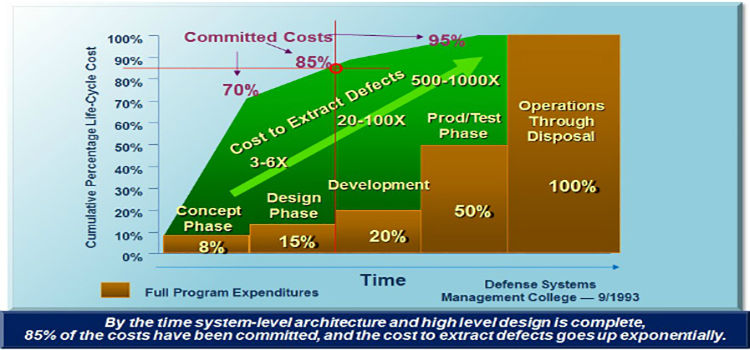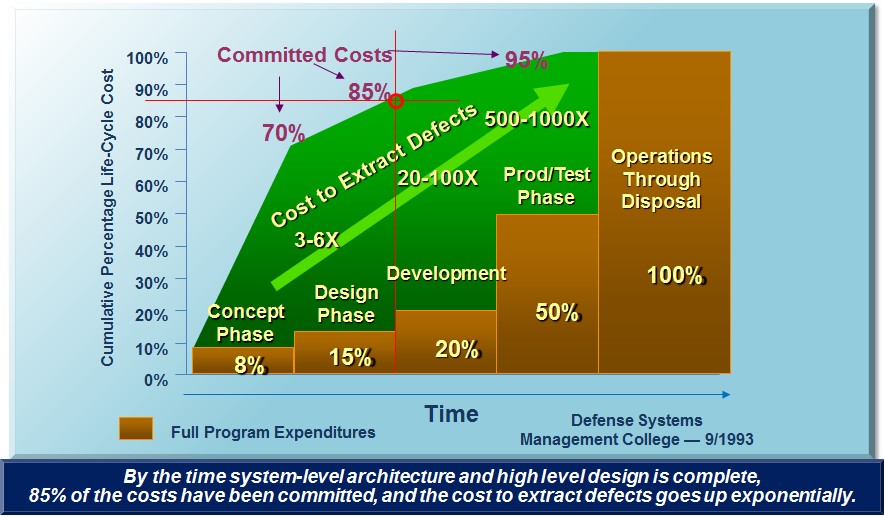Systems engineering – Ignore it at your own risk
Posted on May 23, 2016 by Dr. Robert Cloutier

“There’s never enough time to do it right, but there is always enough time to do it again and again”.
One of the major objections I have heard about incorporating systems engineering on a project or in a business is that it costs too much. I want to share a graph that has been around the systems engineering community for some time. It is from the Defense Systems Management College. The researchers found that for the projects and programs they studied, they could parse the data into 4 phases in the design and production effort. This partitioning is consistent with my 20+ years of industry experience. Most use this diagram to show the need for peer reviews due to the cost of defect extraction (and that will be a future topic of this blog I am sure), but I want to look at the other data point on this chart.

Notice that with only 8% of the work done, the decisions made have committed 70% of the costs for the project – those costs have not been expended, but they have been committed. By the end of the design phase, or 23% of the project time, decisions and work have committed 85% of the costs. So, one must ask, what is being done well, or poorly, during the early stages of a project?
During the concept phase, the systems engineering tasks include understand who the stakeholders (including customers) are, what are their desirements, exploring the potential concepts available to address those desirements, selection of the best concept, definition of the selected system requirements, architecting the solution, and designing the new system.
Think about this - maybe the reason we allocate so much time to integration and test is that we did not expend enough time in the planning, architecture, and design phases – we just jumped to the development and production phases. If more time was spent in the early concept and design phases, would it take that much time to test the well-designed system?
Do you really leave your front end work up to ad hoc processes? Are your teams jumping to solutions, and not considering the unintentional consequences? Are you finding there is a lot of re-work on your projects? Unexpected surprises?
Hall of Fame basketball player/coach John Wooden would tell his team during training and preparation - “If you don’t have time to do it right, when you will have time to do it over?”
Systems engineering is not too expensive. But, it is too expensive to not systems engineer your solution.
Next time, I will share some data from NASA that is very consistent with this posting.
-

Ph.D. Defense
Congratulations to Tom Wade. He successfully defended his doctoral dis...
June 17, 2020 -

Systems Engineering Master's Degree approved
The Alabama Commission on Higher Education voted to approve to allow U...
June 17, 2020 -

D.Sc. Defense
Jacob Deal and Meagan Bunge Successfully Defend their Research!...
June 12, 2018 -

INCOSE names new SEBoK Editor-in-Chief
International Council on Systems Engineering (INCOSE) Selects USA Prof...
June 11, 2018


